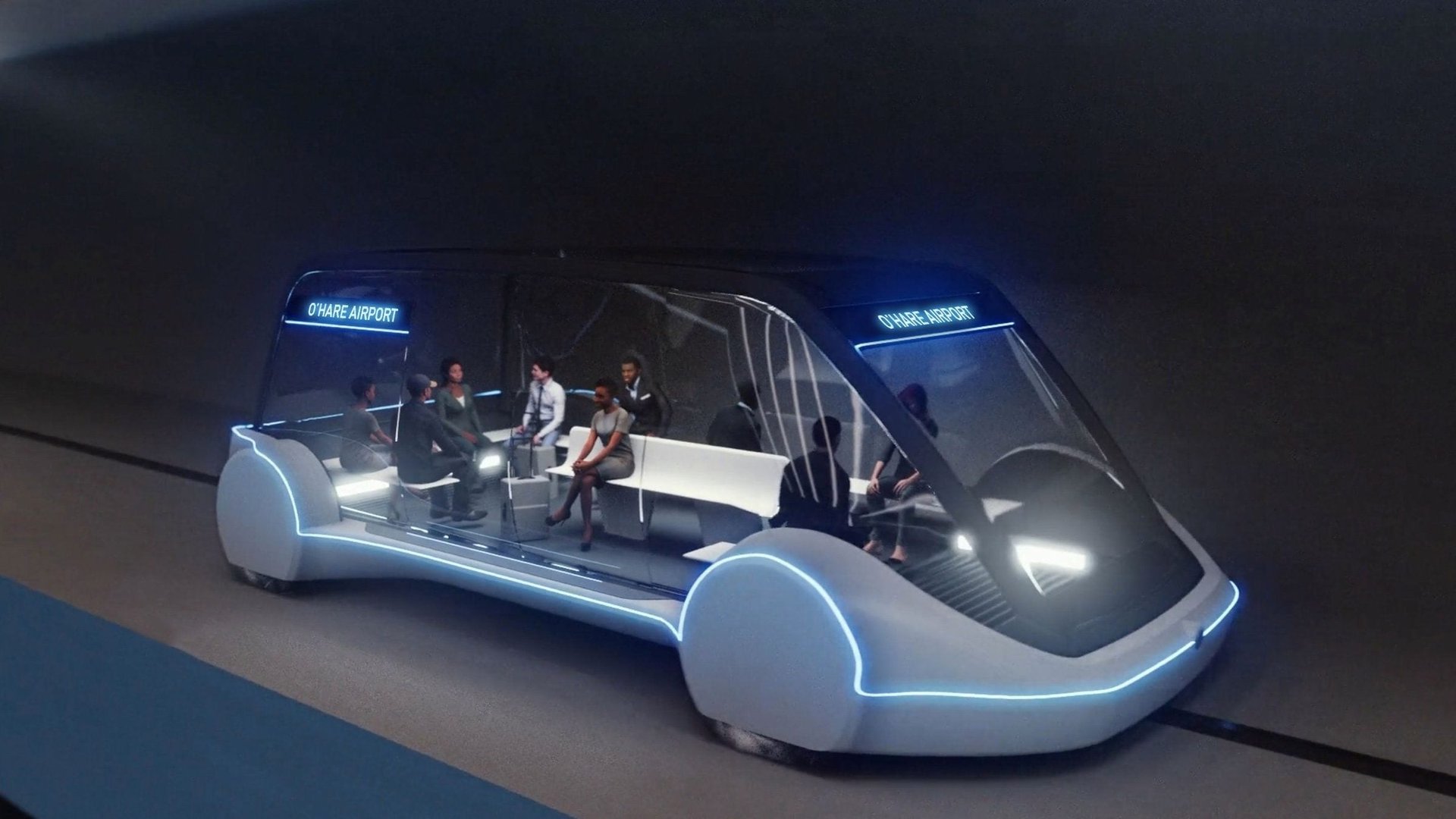Can Elon Musk’s company really build Chicago’s high-speed Loop?
The city of Chicago has chosen The Boring Company to build its next transit project—dubbed “Loop”—which aims to whisk passengers from downtown to O’Hare airport at speeds of 100 mph.


The city of Chicago has chosen The Boring Company to build its next transit project—dubbed “Loop”—which aims to whisk passengers from downtown to O’Hare airport at speeds of 100 mph.
The big news was followed by a big question: Can another company founded by Elon Musk do something never done with technology not yet tested on a scale never attempted before?
Maybe. First, The Boring Company will need to drastically cut the costs of tunneling while working under one of the world’s major cities. Loop’s novel underground transportation system must adapt electric transport technology developed at Tesla to subterranean applications. Then it must tie this all together with a network of above and below-ground stations without running out of money—the fate that has befallen Chicago’s previous high-speed transit dreams.
Chicago was at least the third city to enter negotiations with The Boring Company to build subterranean transit. Los Angeles is exploring a 6.5-mile proof-of-concept tunnel and a Phase 2 expansion that would stretch for more than 50 miles along major arteries. Last year, Musk won permission from Maryland officials to dig a 10.1-mile tunnel “beneath the state-owned portion of the Baltimore-Washington Parkway, according to the Baltimore Sun. US cities are looking for alternatives to overcrowded highways and impossibly expensive subways. (Los Angeles’s latest project cost an estimated $1 billion per mile.)
Musk, who started The Boring Company in 2016 with the goal of combatting LA’s “soul-destroying” traffic, is promising to make tunneling cheaper and faster, and to radically rethink the vehicles carrying passengers. It has agreed to foot the bill for the entire Chicago project. Boring was among four companies competing for the contract.
Why Chicago went with Musk
Chicago’s Mayor Rahm Emanuel said Chicago bet on Musk’s record as a founder who has built Tesla and SpaceX—the first private company to send a spacecraft to the International Space Station. “He’s proven something,” he told The Chicago Tribune. “The risk—with no financial risk—is I’m betting on guy who has proven in space, auto and now a tunnel, that he can innovate and create something of the future. Given his track record, we are taking his reputation, and saying, ‘This is a guy in two other transportation modes who has not failed. That’s what we are doing.’”
For the Loop, passengers are expected to ride in autonomous 16-passenger vehicles, or “skates,” based loosely on Tesla’s Model X SUV. The battery-powered vehicles will move along tracks with wheels on a concrete shelf much like a car, while four stabilizing wheels on the sides would ride along curbs in the tunnel walls. Unlike the Hyperloop, a vacuum-sealed tube being built out by companies such as Virgin Hyperloop One and theoretically capable of speeds up to 600 MPH, the Chicago project will be designed with conventional tunnels at much slower speeds. City officials said it would be able to handle 2,000 passengers per hour in each direction, with departures as frequently as every 30 seconds. The final destination will be at a new $8.5 billion global terminal Emmanuel has announced for O’Hare.
So far, there have been no public demonstrations of The Boring Company’s technology, with most details outlined only in conceptual sketches. The company is digging a test tunnel near the Hawthorne, California headquarters of SpaceX. Video renderings of the system show autonomous vehicles that can pick up passengers at street level and then move them along concrete tubes to their destination.
Can Loop ever become reality?
Some are skeptical such a project will be built. While where is no official timeline for the project or an estimated cost, the Tribune cited a source who estimated price as less than $1 billion. The Boring Company must pay for a new station at O’Hare and renovate a unopened transit “superstation” at Block 37, part of a shopping center near City Hall that was a vestige of an abandoned high-speed rail project. Several above-ground stations in the city will also needed, although the city will provide rights for underground construction. To recoup its costs, Boring is expected to keep all fares, advertising and in-vehicle sales.
The Boring Company, which only has 14 employees listed on LinkedIn, is private and has raised just $112.5 million, according to the private equity research firm PitchBook. The massive engineering feat would also be coupled with an unprecedented reduction in costs for such a transit project. The city’s last attempt at high-speed rail led to spending $400 million on a subway “superstation” that was ultimately abandoned.
Also, it’s not clear if the benefits of the airport connection would justify the costs. The existing above-ground Blue Line trains charge riders about $5 for a 40-45 minute ride. The Loop’s 18-mile route supposedly would cost passengers $20 to $25 per trip.
If The Boring Company succeeds at its stated goal of bringing down the cost of underground tunneling to one-tenth of what it is today, the Chicago project will likely be just the beginning of a new wave of construction. Last year, Gregory Hauser, a civil engineer at Dragados who recently managed the replacement of Seattle’s Alaskan Way Viaduct—the largest underground highway project in the US—said what The Boring Company attempting is on par with the challenge faced by SpaceX.
“Nothing is impossible, but all of it is very difficult,” he said, noting that today’s technologies are not up to the job. After 40 years of incremental innovation in transportation, most of it from outside the US, “I’m all for it,” he said. “The industry needs new thinking and technology.”